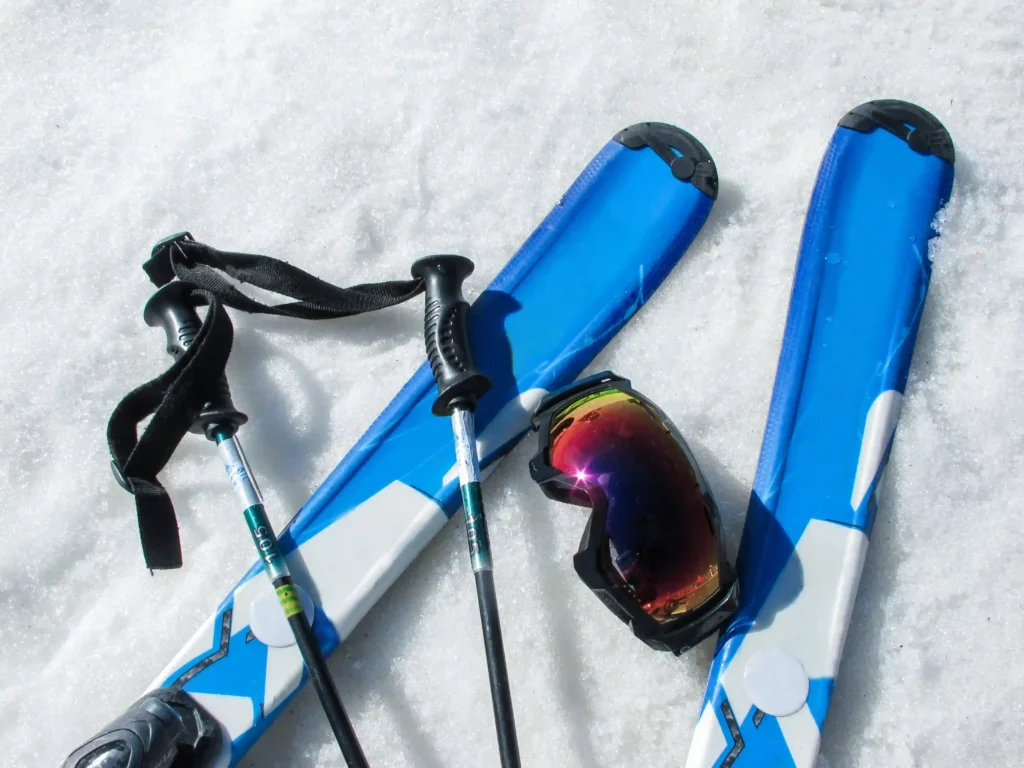Skiing is more than just a sport—it’s an exhilarating adventure that mixes the thrill of speed with the beauty of winter landscapes. Whether you’re a seasoned pro or just getting started, having the right gear can really make a difference in your experience.
This handy skiing equipment guide is here to help you figure out what you need for a safe and fun trip down the mountain.
Table of Contents
The Growing Popularity of Skiing
Every winter, millions of snow lovers head to winter wonderlands to enjoy skiing’s perfect mix of thrill and peace. As its popularity grows, more and more beginners and seasoned skiers are hitting the slopes like never before. This boom means everyone is on the hunt for the essential skiing gear to boost their adventures.
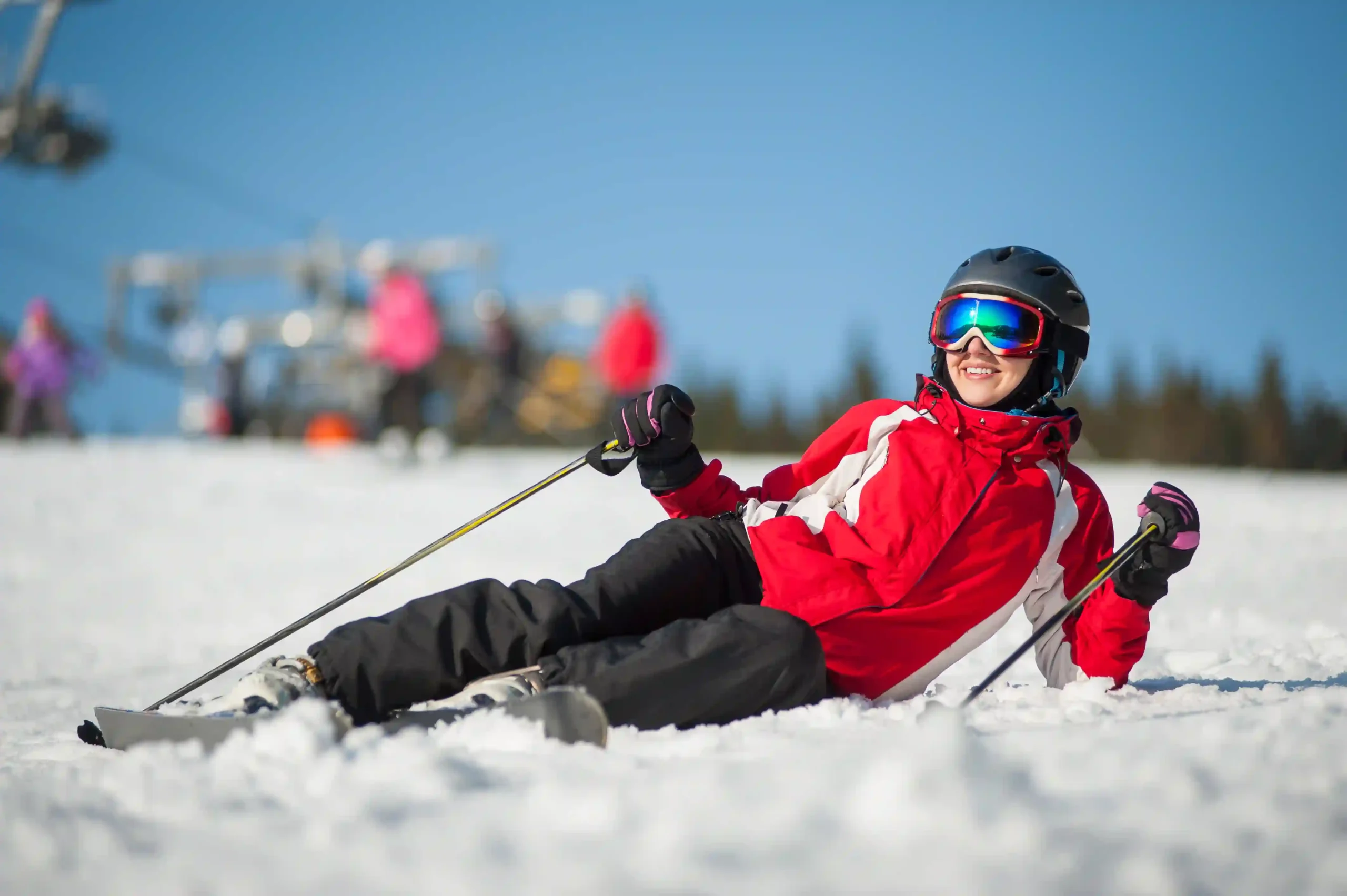
Skiing lets you connect with nature while having fun and pushing your limits. For newcomers, it’s a chance to pick up a new skill and join a community of fellow enthusiasts. With the right gear, you can enhance your performance and keep safe, ensuring every run is unforgettable.
Investing in the proper ski equipment not only elevates your experience but also keeps you safe. Knowing the essentials of skiing gear helps you make smart choices, whether you’re buying your own or renting from a local shop.
Essential Skiing Equipment for Beginners
Skis: Types, Length, and Features
Choosing the right skis is key for beginners. There are different types like alpine, freestyle, and cross-country, each suited for different styles. Most beginners go for alpine skis because they’re stable and easy to control on groomed slopes.
When picking ski length, think about your height, weight, and skill level. Shorter skis are easier to handle, perfect for newbies. Look for features like rocker shapes and lightweight materials to boost performance and comfort.
Get to know the basics, like core material and sidecut, to find your perfect match. A well-balanced ski gives you a smoother ride and better control, so you can focus on learning and having fun on the slopes.

Ski Boots: Fitting, Comfort, and Support
Ski boots are your link to the slopes, so finding a comfy and supportive pair is a must. A good fit means better control and less chance of injury. Your boots should be snug but not too tight, with a little wiggle room for your toes.
Keep an eye on the flex rating of ski boots; it tells you how stiff they are. Beginners usually go for softer boots for more flexibility and comfort. Look for features like adjustable buckles and custom liners to boost fit and support.
Try on a bunch of boots and chat with a professional fitter to find your perfect match. Comfort is key—no one wants an exciting day on the slopes to turn into an uncomfortable ordeal because of ill-fitting boots.

Bindings: Safety and Performance
Bindings are the crucial connection between your skis and boots, playing a big role in your safety and performance. They let your boots release from the skis during falls, helping to prevent injuries. Picking the right bindings means thinking about your skill level, weight, and skiing style.
If you’re just starting out, go for bindings with adjustable DIN settings, so you can tweak the release tension as you get more experience. Look for bindings that are easy to step into and have dependable release systems.
Keep in mind that regular maintenance and professional adjustments are key to making sure your bindings work properly. Well-adjusted bindings boost your safety and give you peace of mind as you hit the slopes and learn to ski.
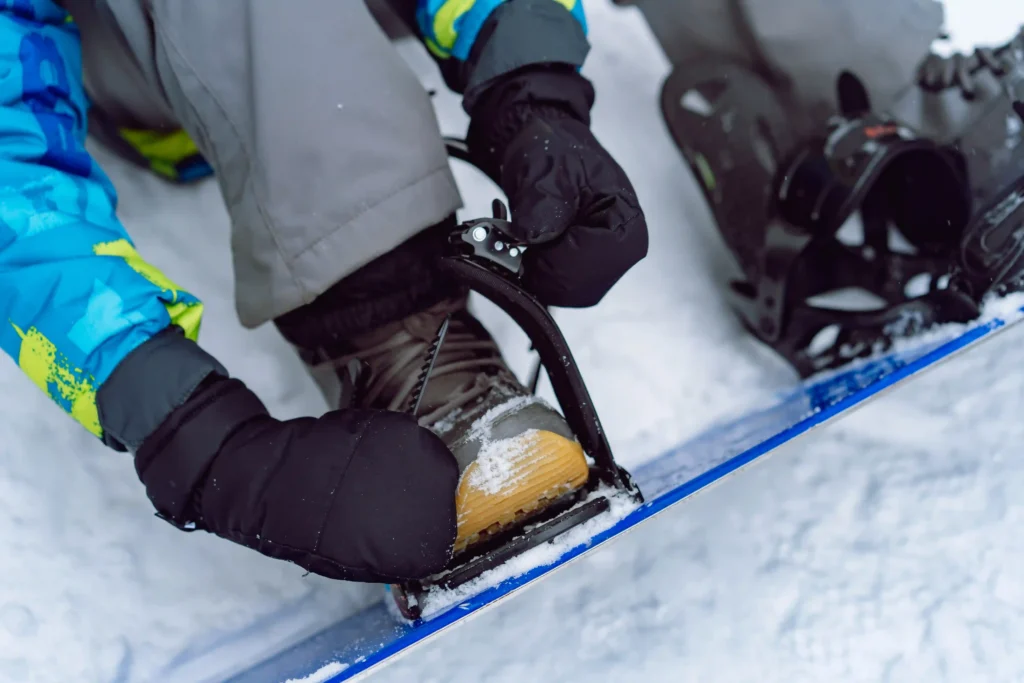
Poles: Sizing and Material
Ski poles provide balance and rhythm on the slopes. For beginners, choosing the right size and material is essential. Use a simple method to find the correct pole size—turn the pole upside down, grip it under the basket, and ensure your elbow forms a 90-degree angle.
Materials like aluminum and composite offer durability and lightweight performance. Beginners often prefer aluminum poles for their affordability and reliability.
Poles come with a variety of grips and straps, providing comfort and security. Experiment with different designs to find the one that feels most comfortable in your hands.
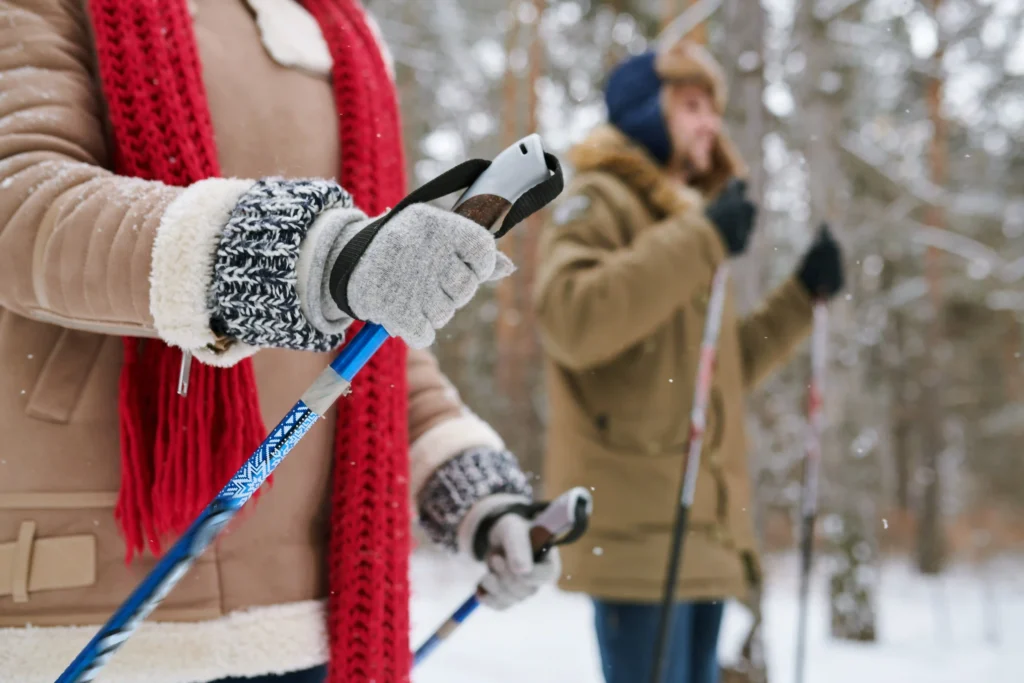
Advanced Skiing Equipment for Enthusiasts
High-Performance Skis: Carving vs. All-Mountain
Ski enthusiasts often look for high-performance skis to take their experience to the next level. Carving skis are perfect for making precise turns on groomed runs, while all-mountain skis offer the versatility to tackle different terrains. Understanding your skiing style can help you find the best match for your needs.
High-performance skis often come with advanced materials like carbon fiber and titanium, boosting their strength and agility. These skis provide extra stability and responsiveness, letting experienced skiers really push their limits.
When picking high-performance skis, think about factors like width, camber, and rocker profiles. These features affect how the skis handle various conditions, helping you choose the perfect pair for your skiing adventures.
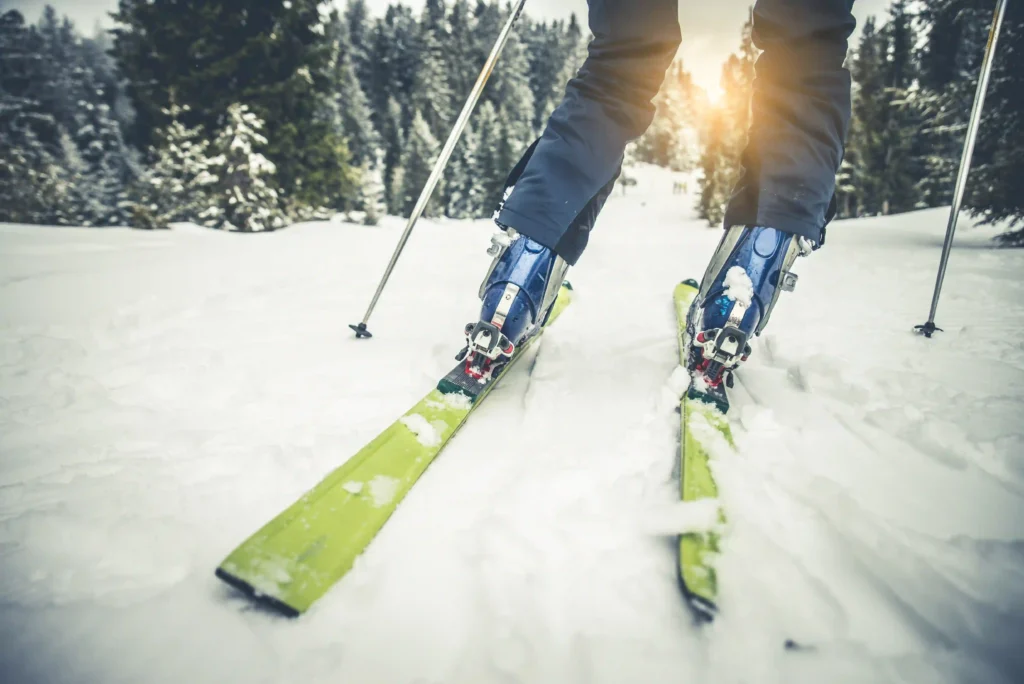
Specialized Boots: Custom Fitting and Features
For advanced skiers, specialized boots offer custom fitting and features that enhance performance. Custom liners mold to your feet, providing unparalleled comfort and control. High-stiffness flex ratings cater to aggressive skiing styles, offering precision and support.
Specialized boots often include features like walk modes and interchangeable soles, adding versatility for backcountry and alpine touring. These boots are engineered for demanding conditions, ensuring you can tackle any terrain with confidence.
Consulting with a professional boot fitter ensures that your specialized boots fit perfectly. A precise fit enhances your performance and reduces the risk of blisters and discomfort during long days on the slopes.
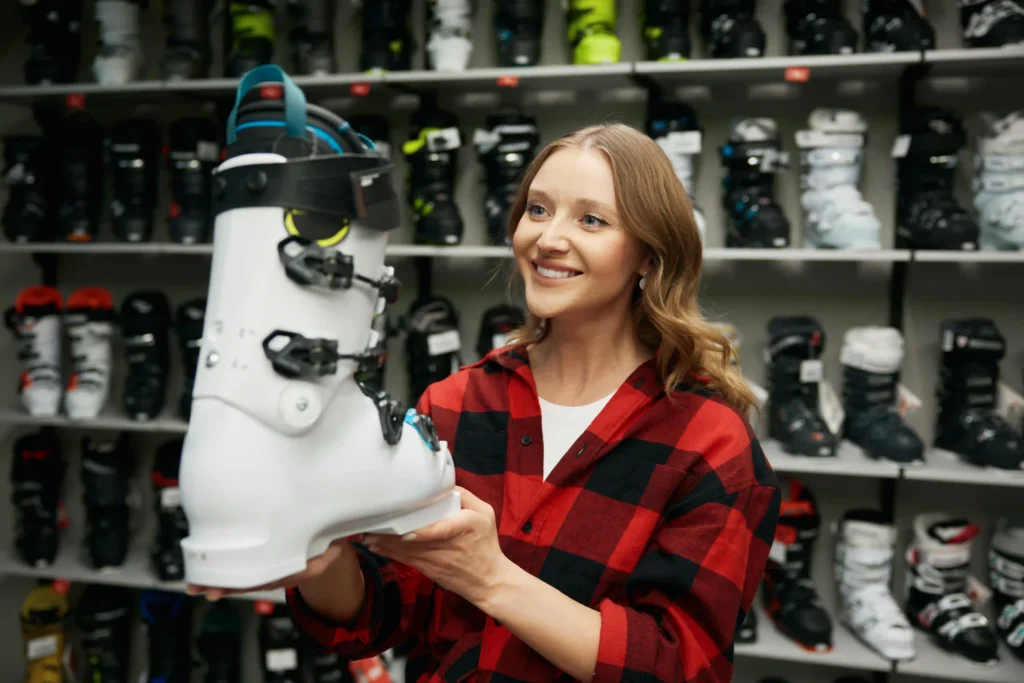
Technical Bindings: Precision and Durability
Technical bindings are perfect for experienced skiers who value precision and durability. With advanced materials and construction, these bindings deliver reliable performance even in challenging conditions. Look for options with higher DIN settings to match aggressive skiing styles.
Some technical bindings also offer touring capabilities, perfect for skiers eager to explore off-piste terrain. Designed to handle the demands of backcountry skiing, these bindings provide the security and performance needed in varied environments.
To keep your technical bindings in top shape, regular inspection and maintenance are key. Professional servicing and adjustments ensure your bindings work flawlessly, so you can focus on the joy of skiing.

Innovative Gear: Helmets, Goggles, and Clothing
Safety and comfort are top priorities for enthusiasts, making helmets and goggles must-have gear. Modern helmets are lightweight, protective, and well-ventilated, keeping you safe and comfy on the slopes. Be sure to pick helmets with adjustable fit systems and impact-absorbing technology.
Goggles are all about clarity and shielding you from the elements. Go for ones with anti-fog coatings and interchangeable lenses to keep your visibility sharp in varying light.
Layering up is key to staying warm and cozy out there. Invest in technical clothing that wicks away moisture and holds in heat. A good combo of base layers, insulating mid-layers, and waterproof outer shells will have you ready for any weather!
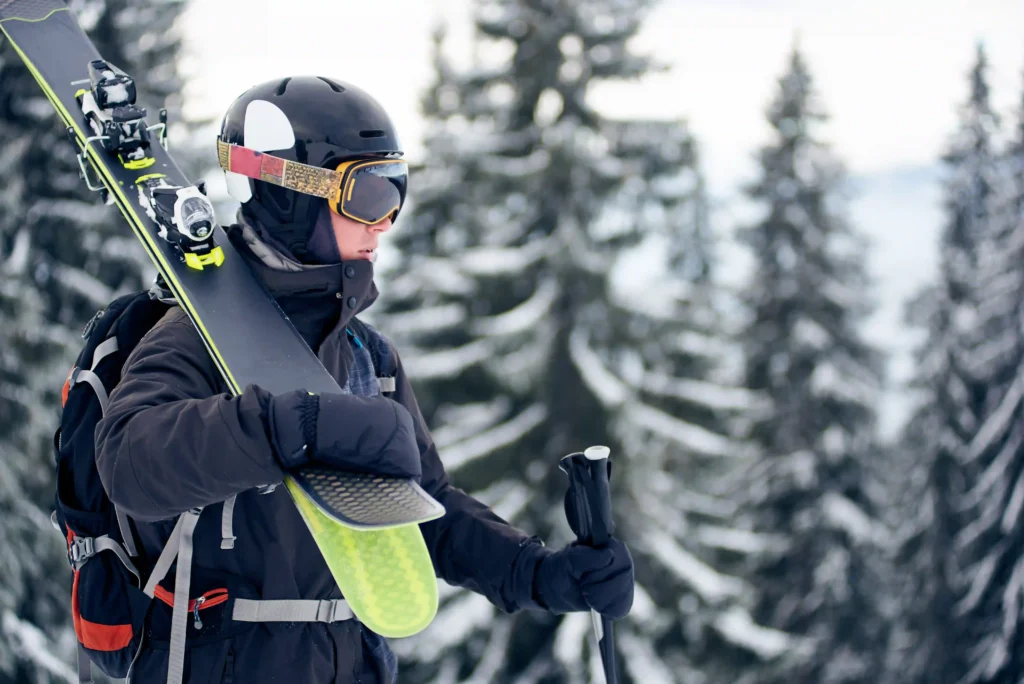
How to Choose the Right Equipment for Your Skill Level
Expert Tips and Advice
Choosing the right skiing equipment involves considering your skill level and preferences. Experts recommend consulting with professionals when selecting gear, as their insights can help you make informed decisions tailored to your needs.
Consider factors like terrain preferences and skiing goals when choosing equipment. Whether you enjoy groomed runs or backcountry adventures, selecting gear that complements your style enhances your skiing experience.
Taking lessons and practicing regularly allows you to assess your equipment needs as you progress. Your skill level and confidence will evolve, requiring adjustments to your gear over time.
Considering Your Budget
Budget plays a significant role in selecting skiing equipment. While high-performance gear offers advanced features, beginners can find quality equipment at affordable prices. Prioritize essential items like boots and skis, investing in upgrades as your skills develop.
Renting equipment is a viable option for those seeking cost-effective solutions. Rental shops often offer a range of equipment, allowing you to test different styles before committing to a purchase.
Savvy shoppers can find discounts and sales during the off-season, making it easier to acquire quality gear without breaking the bank. Keep an eye out for deals to maximize your budget.
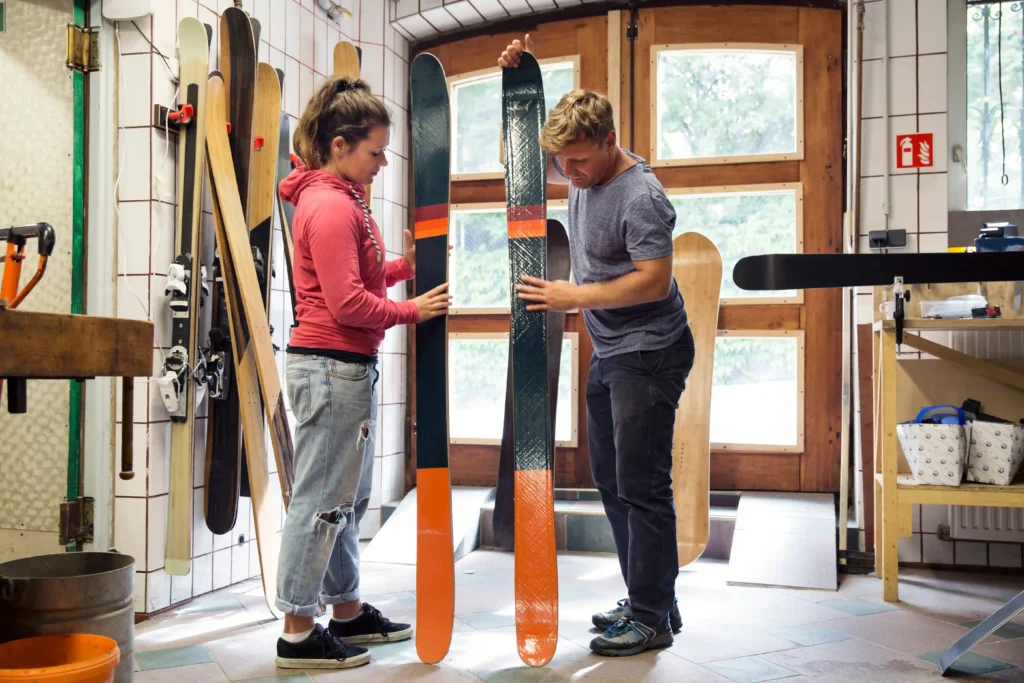
Benefits of Renting vs. Buying
Renting equipment provides flexibility and cost savings, especially for beginners unsure of their long-term commitment to skiing. Rental shops offer a variety of gear, allowing you to experiment with different styles before making a purchase.
Buying equipment is ideal for dedicated skiers seeking personalized gear. Ownership allows you to customize your setup, ensuring a perfect fit and optimal performance.
Consider renting for your first few trips to the slopes, gaining insights into your equipment preferences. Once you’re confident in your choices, investing in your own gear enhances your skiing experience.
Maintenance and Care of Skiing Equipment
Regular Checks and Adjustments
Proper maintenance ensures your skiing equipment performs optimally and lasts longer. Regularly inspect your gear for signs of wear, addressing issues promptly to prevent further damage. Pay attention to skis, bindings, and boots, ensuring they function safely.
Bindings require periodic adjustments to maintain correct release settings. Consult with professionals for accurate DIN adjustments, enhancing your safety on the slopes.
Conducting regular checks before each ski trip ensures your equipment is ready for action. A few minutes of inspection can prevent issues and enhance your overall skiing experience.
Storage and Transportation Guidelines
Proper storage and transportation protect your skiing equipment from damage. Store your gear in a cool, dry place away from direct sunlight and extreme temperatures. Consider using a ski bag for added protection during transport.
Clean your equipment after each use, removing dirt and moisture to prevent rust and deterioration. Dry your boots thoroughly and store them in a ventilated area to maintain their shape and comfort.
Investing in quality storage solutions like racks and bags extends the lifespan of your gear. Proper care ensures your equipment remains in top condition for future ski seasons.
Professional Services and DIY Tips
Professional servicing is an excellent way to maintain your skiing equipment’s performance. Ski shops offer services like tuning, waxing, and binding adjustments, ensuring your gear functions optimally.
DIY maintenance is a cost-effective way to keep your equipment in shape. Learning basic skills like waxing and edge sharpening allows you to perform routine upkeep at home.
Invest in a tuning kit for DIY maintenance, providing you with the tools needed for quick fixes. Regular upkeep enhances your skiing experience and prolongs the life of your equipment.
Conclusion
Investing in the right skiing equipment is essential for maximizing your skiing enjoyment and safety. By understanding the different types of gear and their features, you can make informed choices that suit your skill level and preferences.
Whether you’re a beginner hitting the slopes for the first time or an enthusiast seeking advanced equipment, this comprehensive skiing equipment guide provides valuable insights and tips. Proper maintenance ensures your gear remains in excellent condition, ready for countless adventures on the slopes.
Take your skiing experience to the next level by exploring more about skiing gear and techniques. Sign up for lessons or join a skiing community to connect with fellow enthusiasts and share your passion for this exhilarating winter sport.
FAQ
What is the best way to select skis for a beginner?
For beginners, it’s best to choose skis that are shorter and more flexible, as these provide greater control and stability. Focus on skis that are approximately chin-height and designed for beginner to intermediate levels, offering a forgiving experience as you learn the ropes. Consult with professionals to find the ideal skis based on your height, weight, and skiing goals.
How often should skiing equipment be serviced?
Skiing equipment should be serviced at least once or twice a season, depending on how frequently you hit the slopes. If you ski regularly, consider mid-season tuning to ensure optimal performance. Routine maintenance checks before every trip are crucial to ensuring safety and enhancing your skiing experience.
Can I try out skiing gear before purchasing?
Yes, many ski resorts and rental shops offer demo services where you can test different equipment styles and brands before buying. This allows you to find gear that matches your style, skill level, and comfort needs. Trying equipment before purchasing helps ensure you invest in the right gear tailored to your personal preferences.
Is renting equipment safe for beginners?
Renting equipment is safe and highly recommended for beginners. Rental shops provide well-maintained, quality gear and adjust bindings to suit your skill level, enhancing safety during your initial skiing experiences. This option also allows beginners to explore without the financial commitment of buying equipment initially.
